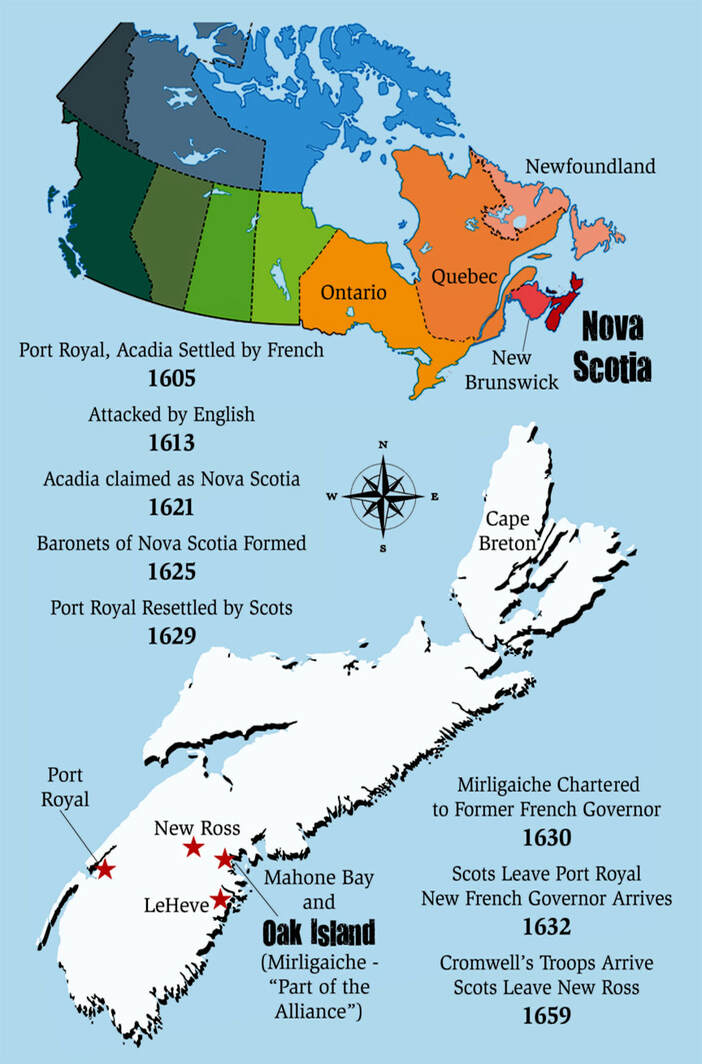The Baronets Timeline
|
If there is one thing we've learned from the Oak Island TV show, it's that a lot of items have dated to the 1600s. That's no surprise to me because this is what I have predicted in my book Oak Island 1632, and expanded upon in my third book, Oak Island Knights, which of course I urge the reader to consider purchasing, if you are an avid Oak Island fan.
In these book I outline how clan chieftains from Scotland, who had tantalizing links back to the Knights Templar, became Knights Baronet of Nova Scotia. My own extended family has held the title of the premier Baronet of Nova Scotia since 1625. The current Baronet's full name is Sir Ian MacDonald MacUisdean, and from MacUisdean came my more modern spelling of McQuiston. Presented here is a timeline of events that led up to activity around Oak Island from basically 1630 to 1659, concerning the Alexander family who established the Knights Baronet, and who conceived of the idea of a Nova Scotia, or New Scotland in 1620. However, it should be stated that the final land claim involving this special class of Knights of Nova Scotia was not settled until 1733, and was held at the time by the great granddaughter of the man who had been given the barony closest to Oak Island. The jewel that was found in a silver setting was dated at least tentatively to 400-500 years old. This would mean 1518 to 1618, and so it would fit within two years of my theory, which begins essentially in 1620. Obviously, the estimate on the jewel is broad and further study is needed. In addition, several coins, several pieces of finished lumber, and a couple of human bones have all been dated within the 1600s. Even in the war room it has been discussed that the 1600s seem to be the most obvious time period to look for answers as to what happened on Oak Island before the Money Pit discovery of 1795. I think I have at least part of the answer, and I still continue to research nearly every day. In my book I show many reasons for my theory based on history, logic and even a little science. I'll let the artwork I've posted here speak for itself as to the rest. |
Note that Port Royal, located on the leeward side of Nova Scotia, would tend to have better weather and safer coastlines than the windward side along the Atlantic Coast. This is why Port Royal was settled first by the French, coveted by the English, and finally settled by the Scots from 1629-1632. Being forced out in late April 1632, the Scots would have almost certainly faced spring storms on the Atlantic and my contention is that they pulled into Mahone Bay for protection, traveling back to perhaps the safest point on the Altantic coast - Oak Island.
|

